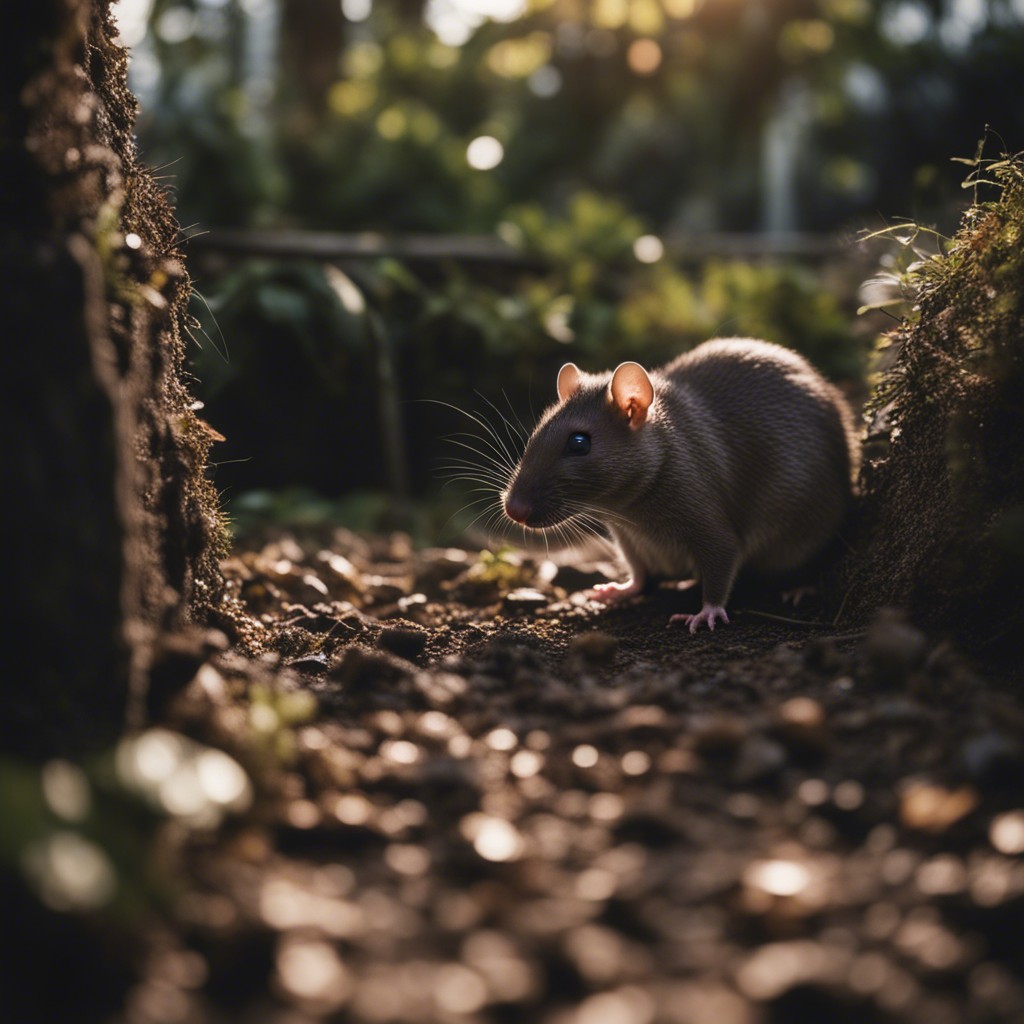In this blog post we will discuss how to remove rat holes from your backyard. If you’ve discovered these bothersome holes in your yard, it’s crucial to take steps to eradicate them. Rat holes not only harm your yard, but they may also indicate a larger infestation that poses health hazards. In this blog post, we will assist you in identifying rat holes, comprehending the dangers they present, and offering practical advice and techniques for eliminating them. Let’s get started and reclaim your backyard from these unwelcome guests.
Understanding Rat Holes
What Are Rat Holes?
Rat holes are small burrows or tunnels created by rodents, primarily rats. These holes serve as entry and exit points for these pests and are typically found in hidden or less-trafficked areas of your yard.
Signs of Rat Holes
Identifying rat holes is crucial to addressing the problem. Look for small, round holes in the ground, usually around 2 inches in diameter. You may also notice mounds of dirt or loose soil near these holes.
The Dangers They Pose
Rat holes are not just a cosmetic issue; they can have severe consequences:
1. Property Damage
Rats can burrow extensively, causing damage to your lawn, garden, and even the foundation of your home.
2. Health Hazards
Rats carry diseases and parasites that can be transmitted to humans and pets. Their presence in your backyard can pose significant health risks.
Identifying the Culprits
Types of Rats
To effectively eliminate rat holes, it’s essential to know the type of rats you’re dealing with. The most common types include:
a. Norway Rats
These rats are burrowers and are known for creating extensive underground tunnels.
b. Roof Rats
Roof rats, as the name suggests, often nest in higher areas like trees and attics.
c. House Mice
Though smaller than rats, mice can also dig holes in your yard and create problems.
Getting Rid of Rat Holes
Prevention Is Key
1. Secure Your Garbage
Rats are attracted to food sources. Ensure your garbage cans have tight-fitting lids.
2. Remove Clutter
Keep your yard clean and clutter-free, reducing hiding spots for rats.
Elimination Techniques
1. Trapping
Use humane traps to catch rats. Once caught, release them far away from your property.
2. Baiting
Rat bait stations can effectively reduce rat populations. Ensure these are placed out of reach of children and pets.
Professional Help
In severe infestations, it’s best to consult a pest control professional. They have the expertise and tools to handle the problem safely.
Conclusion
Dealing with rat holes in your backyard can be a daunting task, but it’s essential for your property’s well-being and your family’s health. By identifying these holes, understanding the dangers they pose, and employing prevention and elimination techniques, you can regain control of your outdoor space.
For more information and expert guidance on pest control, access our resource: Access Now: https://bit.ly/J_Umma.
FAQs
1. How do I know if I have a rat infestation?
Look for signs like rat holes, droppings, gnawed objects, and unusual noises in your walls or attic.
2. Can I fill rat holes with soil to block them?
While you can temporarily block rat holes, it’s crucial to address the root cause of the infestation to prevent them from returning.
3. Are there natural remedies to deter rats?
Some natural repellents like peppermint oil and mothballs may deter rats, but they are not always effective in severe infestations.
4. What diseases can rats transmit?
Rats can transmit diseases such as leptospirosis, hantavirus, and salmonellosis to humans through direct or indirect contact.
5. How long does it take to eliminate a rat infestation?
The time required to eliminate a rat infestation varies depending on its severity. It’s best to consult a pest control professional for an accurate assessment and timeline.

